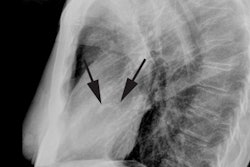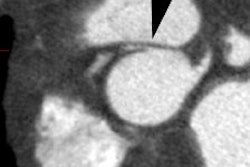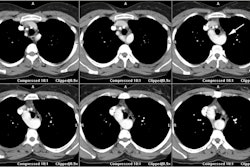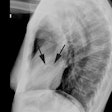Aortic-Pulmonary Window:
Clinical:
Aortic-pulmonary window is a rare anomaly - accounting for 0.1% of all congenital heart disease [2]. Due to failure of complete septation of the common truncus which results in a persistent communication between the ascending aorta (immediately above the sinotubular junction) and the main pulmonary artery above the aortic and pulmonary valve level [1]. There is a resultant large left-to-right shunt [1]. Unlike truncus arteriosus, there are well-defined and separate aortic and pulmonary valves [2]. The pathophysiology is similar to a PDA [1,2]. An associated VSD can be seen [1]. There can be severe CHF [1]. Non-invasive evaluation with echocardiography may not detect the communication in up to 37% of cases [2].The condition is divided into 3 types (Mori classification):
Type I (proximal communication) occurs near the semilunar valves and accounts for 70-96% of cases [2].
Type II (distal communication) involves the pulmonary bifurcation at the level of the right pulmonary artery and accounts for 14-25% of cases [2]. This form may be associated with Type A interrupted aortic arch [2].
Type III is associated with total absence of the aortopulmonary septum and accounts for only 5% of cases [2].
REFERENCES:
(1) Pediatric Clinics of North America 1999; Driscoll DJ. Left-to-right
shunt lesions. 46(2): 355-368
(2) Radiographics 2010; Kimura-Hayama ET, et al. Uncommon congenital and acquired aortic diseases: role of multidetector CT angiography. 30: 79-98






